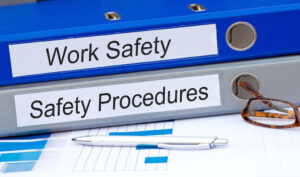
Cognitive Decline at Work: Employers, Are You Prepared?
Cognitive decline is a tricky subject. It can be caused by a variety of factors – from natural aging to hypothyroidism to Alzheimer’s disease. Sometimes,

Cognitive decline is a tricky subject. It can be caused by a variety of factors – from natural aging to hypothyroidism to Alzheimer’s disease. Sometimes,

The Problem Can you confidently say that 100% of your employees feel safe at work? For business and HR leaders, ensuring the health and safety

In pursuing health and success for a business, safety compliance is critical and we understand why. Monitoring injuries and potential hazards can help your workplace

Just when everyone got the hang of working from home, employers are bringing whole departments back to working in office settings. According to CNBC reporting,

According to new CDC vaccine guidelines, vaccinated individuals can now safely gather indoors without a face covering. This is an exciting development after more than

In any workplace, health and safety has to be top of mind. Complying with workplace laws takes a lot more effort when your workers are

The spread of COVID-19 is changing how we all operate, and businesses are no exception. With cases mounting across the United States, we’re watching the